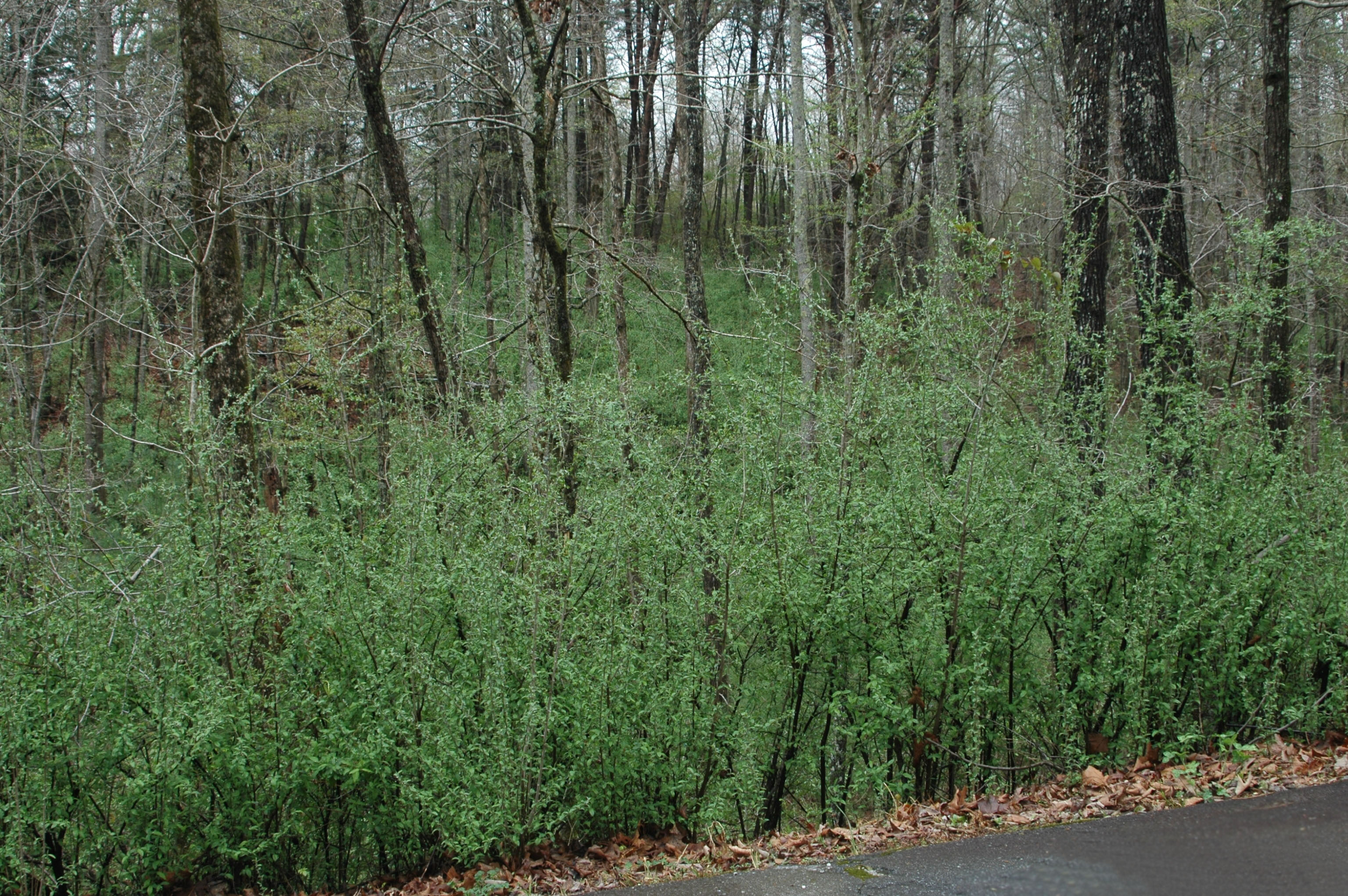Ask the Steward
By Dan Ernst
Question: Many years ago I planted Autumn olive as a recommended wildlife shrub. Now it has spread and I’m told it is an undesirable invasive species. Which is correct?
Answer: You are correct on both counts. In the 1970’s Autumn olive was touted as both a great wildlife shrub and a plant that could improve soil fertility because of its’ nitrogen fixing characteristics. It was recommended by several governmental agencies, conservation and wildlife groups due to its hardiness, heavy flowering and fruit that could serve as an important food source for a variety of wildlife species. The shrub also added structural diversity and habitat benefits. It was not uncommon to see the shrub planted along highways as green corridors that also supplied wildlife benefits. However, by the 1990’s it was evident that Autumn olive was prone to spread as seed was dispersed by birds and mammals which had consumed the fruit. Spread first showed up along fence lines and power lines, and then across open fields. Overtime, the shrub has spread to woodland openings, displacing native plants and to a degree affecting tree regeneration.
Today’s recommendations are to avoid the planting of Autumn olive and all non-native species. Instead, look at species options that are native to Indiana, and better yet, endemic to your area of the State. As for the removal and control of Autumn olive: It is much easier to deal with the problem when populations are small. Young seedlings can be pulled with some ease in early spring when ground conditions are moist. Larger plants require different methods of control, including ‘cut-stump’ and ‘basal spray’ treatments. The cut stump treatment involves cutting near the ground line and then treating the stump with an appropriate herbicide to kill the root system to prevent re-sprouting of the shrub. Foliar spraying can also be effective, but should be applied with care to avoid damage to non-target plants.
Heavy populations in field environments may be best dealt with heavy equipment, such as brush cutters, or small dozer. If at a loss of where to start, I suggest answering these 2 questions: Where is Autumn olive preventing me from achieving by property goals? Where is Autumn olive invading my natural woodlands- especially my priority natural areas?
Good herbicide and control references can be found at http://mnfi.anr.msu.edu/invasive-species/AutumnOliveBCP.pdf , and www.in.gov/dnr/files/Autumn_Olive.pdf
Question: I am looking for a friendly seed mix to establish cover on my logging trails and log landing this fall. The simpler-the better. Any suggestions?
Answer: Your timing is pretty good! Late- August to mid-September generally present good fall seeding conditions. The cooler fall temperatures and typically higher soil moisture levels are conducive to good seed germination and will help newly cast seed get a good footing. The key is to get the seed spread, rooted and growing before frosts reduce opportunity for success. Typically the seeding needs to be completed with 4-8 weeks left in the growing season.
The simplest seeding would be to broadcast 2-4 bushels of winter wheat per acre. Use the higher rate if simply broadcasting the seed on top of the soil. However, for improved success press the seed into the ground or cover lightly. A home-made drag behind an ATV or a small cultipacker works well.
There are also good seed mixtures. Here’s a simple one for 1 year coverage: Two bushels each of Winter wheat and cereal rye and 15 pounds of annual ryegrass; Add in 15 pounds of perennial ryegrass for a multi-year coverage component.
If wildlife habitat improvement is also a concern and there is at least partial sun, try this mixture: six pounds orchard grass, 4 pounds timothy, 2 pounds alsike clover and 6 pounds red clover. Different parts of this mixture will perform better than others depending on your actual site conditions, but include all the species to be most effective. To improve success, some seeds need to be pressed into the soil.
The rates quoted for these mixtures should be enough to seed 1 acre. A layer of straw mulch may be warranted on sloping ground where there is significant ground disturbance. Fall is just around the corner- get that seeder out and tuned up!
Landowners should take steps to control autumn olive and other invasive plants when they are detected. A few plants now can become a difficult to control infestation similar to this picture. Photo by Chris Evans, Illinois Wildlife Action Plan, Bugwood.org.
Dan Ernst is an Assistant State Forester with the Indiana Division of Forestry. He oversees the state forests in Indiana and has authored the “Ask the Steward” column for years. Have a question for the column? Email Dan at dernst@dnr.in.gov.
